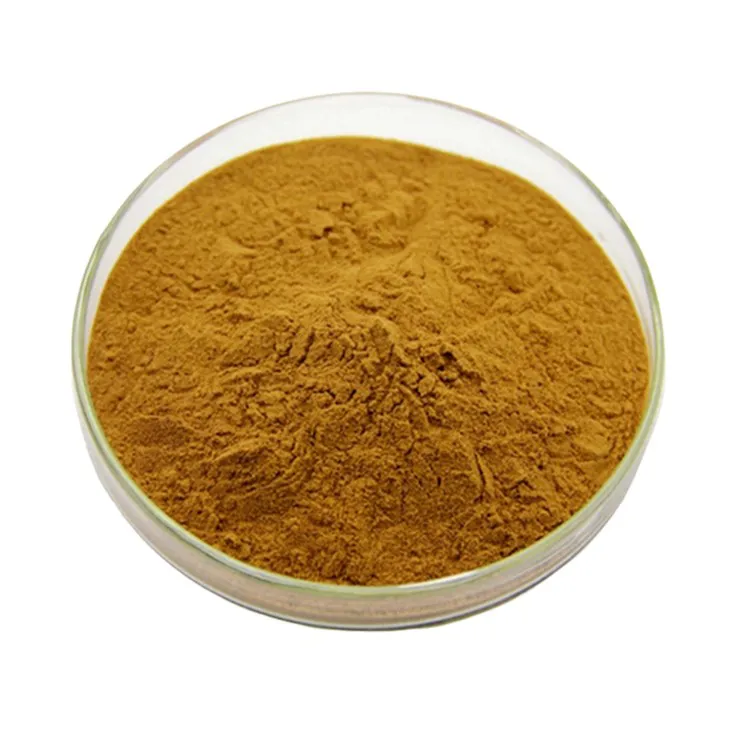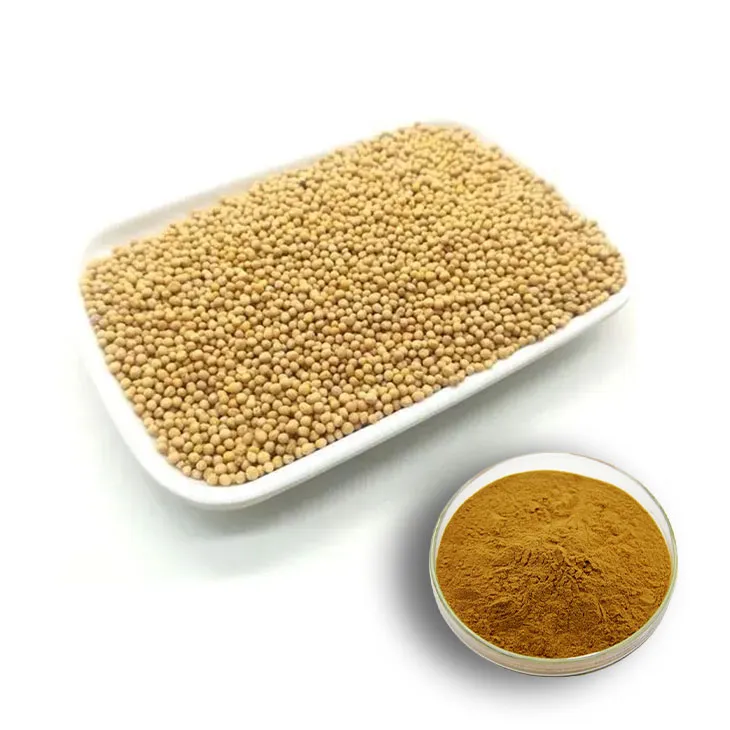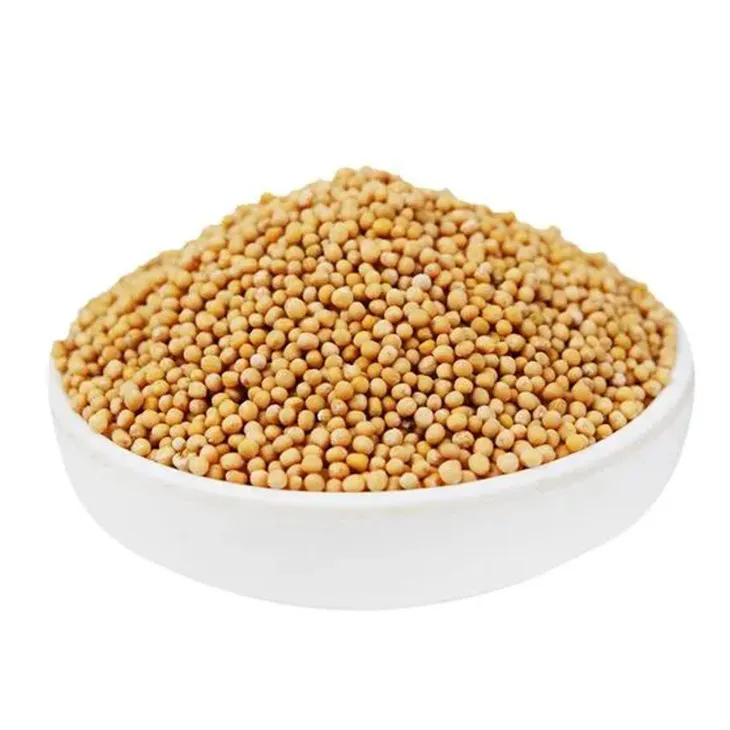- 0086-571-85302990
- sales@greenskybio.com
Optimal Bioavailability of White Mustard Seed Extract.
2024-11-28

1. Introduction
White mustard seed extract has gained significant attention in recent years due to its potential health benefits. However, for these benefits to be fully realized, optimal bioavailability is crucial. Bioavailability refers to the proportion of a substance that enters the circulation and is able to have an active effect on the body. In the case of White mustard seed extract, understanding and enhancing its bioavailability can lead to more effective use in various applications, such as in the field of nutraceuticals and traditional medicine.

2. Extraction Methods and Their Impact on Bioavailability
2.1 Solvent Extraction
Solvent extraction is one of the most common methods for obtaining White mustard seed extract. Different solvents can be used, such as ethanol, methanol, or water. The choice of solvent can significantly affect the composition of the extract and, consequently, its bioavailability. For example, ethanol - based extracts may contain different bioactive compounds compared to water - based extracts. Ethanol can better dissolve lipophilic compounds, which might have a higher potential for absorption in the body. However, water - based extracts may be more suitable for hydrophilic compounds that are also important for the overall efficacy of the white mustard seed extract.
2.2 Supercritical Fluid Extraction
Supercritical fluid extraction (SFE) using carbon dioxide (CO₂) has emerged as an advanced extraction technique. CO₂ in its supercritical state has properties that make it an excellent solvent for extracting bioactive compounds from white mustard seeds. This method offers several advantages in terms of bioavailability. It can produce a cleaner extract, free from solvent residues, which is beneficial for human consumption. Moreover, SFE can selectively extract certain compounds, potentially enhancing the concentration of bioactive components that are more easily absorbed by the body. For instance, it can target specific glucosinolates in white mustard seeds, which are known for their potential health - promoting properties and may have better bioavailability when extracted using SFE.

3. Formulation Techniques for Enhanced Bioavailability
3.1 Encapsulation
Encapsulation is a widely used formulation technique to improve the bioavailability of white mustard seed extract. By encapsulating the extract in various materials, such as liposomes or polymeric matrices, it can be protected from degradation in the gastrointestinal tract. Liposomal encapsulation, for example, can mimic the cell membrane structure, which may enhance the uptake of the extract by cells. The lipid bilayer of liposomes can interact with cell membranes more easily, facilitating the transfer of the bioactive compounds inside the liposome to the cell interior. Polymeric encapsulation, on the other hand, can provide a controlled - release mechanism, ensuring a slow and sustained release of the extract in the body, which can lead to better absorption and utilization.
3.2 Nano - formulation
Nano - formulation is another innovative approach. By reducing the size of the white mustard seed extract particles to the nanoscale, several benefits can be achieved in terms of bioavailability. Nano - particles have a larger surface - to - volume ratio, which can increase the interaction between the extract and biological membranes. This can lead to enhanced penetration and absorption. For example, nano - formulated white mustard seed extract may be more easily taken up by intestinal epithelial cells. Additionally, nano - formulations can improve the solubility of hydrophobic compounds present in the extract, which are often poorly absorbed in their native form. This improvement in solubility can significantly enhance their bioavailability.

4. Physiological Factors Affecting Bioavailability
4.1 Gastrointestinal Tract Conditions
The environment of the gastrointestinal (GI) tract plays a crucial role in determining the bioavailability of white mustard seed extract. The pH levels in different parts of the GI tract can affect the stability and solubility of the extract. For example, in the stomach, which has a highly acidic pH, some compounds in the extract may be protonated, changing their chemical properties and potentially affecting their absorption. In the small intestine, where the pH is more alkaline, different absorption mechanisms come into play. The presence of digestive enzymes in the GI tract can also influence bioavailability. Enzymes may break down certain components of the extract, either enhancing or reducing their bioavailability depending on the nature of the breakdown products.
4.2 Individual Genetic Variations
Genetic factors among individuals can lead to differences in the bioavailability of white mustard seed extract. Genetic polymorphisms in genes related to drug and nutrient metabolism can affect how the body processes the extract. For example, certain individuals may have genetic variations in genes encoding transporters or metabolizing enzymes. These variations can result in different rates of absorption, distribution, metabolism, and excretion (ADME) of the bioactive compounds in the white mustard seed extract. Some people may be able to absorb and utilize the extract more efficiently due to their genetic makeup, while others may have reduced bioavailability.

5. Strategies for Maximizing Bioavailability
To maximize the bioavailability of white mustard seed extract, a combination of appropriate extraction methods, formulation techniques, and consideration of physiological factors is necessary.
- Optimal Extraction Choice: Based on the desired bioactive compounds, select the most suitable extraction method. For example, if lipophilic compounds are of particular interest, supercritical fluid extraction may be a better option. If hydrophilic compounds are the focus, water - based solvent extraction might be more appropriate.
- Advanced Formulation: Utilize encapsulation or nano - formulation techniques depending on the application. For products intended for immediate absorption, liposomal encapsulation may be preferred. For sustained - release applications, polymeric encapsulation could be more suitable. Nano - formulation should be considered when dealing with hydrophobic compounds to improve their solubility and absorption.
- Consideration of Physiological Factors: Take into account the individual's gastrointestinal tract conditions and genetic makeup. For individuals with a sensitive stomach or specific GI disorders, formulations that are more stable in acidic environments may be required. Genetic testing could potentially be used in the future to personalize the use of white mustard seed extract based on an individual's genetic variations related to ADME.
6. Conclusion
In conclusion, the bioavailability of white mustard seed extract is a complex topic that involves multiple factors. Understanding the different extraction methods, formulation techniques, and physiological factors is essential for maximizing its efficacy. By carefully considering these aspects, it is possible to develop more effective products containing white mustard seed extract, whether for use in the nutraceutical industry, traditional medicine, or other applications. Continued research in this area will further enhance our knowledge and ability to optimize the bioavailability of this valuable natural extract.
FAQ:
What are the common extraction methods for white mustard seed extract?
Common extraction methods for white mustard seed extract include solvent extraction, such as using ethanol or water - based solvents. Supercritical fluid extraction is also a possibility. Solvent extraction is relatively simple and cost - effective. Supercritical fluid extraction can often result in a purer extract with fewer impurities, but it requires more specialized equipment.
How do formulation techniques affect the bioavailability of white mustard seed extract?
Formulation techniques play a crucial role in bioavailability. For example, encapsulation can protect the extract from degradation in the digestive tract, allowing it to be released at the appropriate site. Nanoparticle - based formulations can increase the surface area of the extract, enhancing its solubility and thus its absorption. The use of appropriate carriers or excipients can also improve the stability and bioavailability of the extract.
What are the main physiological factors influencing the bioavailability of white mustard seed extract?
Physiological factors include the digestive system's function. The pH in different parts of the digestive tract can affect the solubility and stability of the extract. The presence of digestive enzymes can either break down the active compounds in the extract or help in their release and absorption. Also, the permeability of the intestinal wall plays a role. If the intestinal wall has reduced permeability due to certain diseases or conditions, it can lower the bioavailability of the extract.
Why is maximizing the bioavailability of white mustard seed extract important?
Maximizing the bioavailability is important because it allows for a greater proportion of the active compounds in the white mustard seed extract to be absorbed and utilized by the body. This can lead to enhanced therapeutic effects if the extract is being used for medicinal purposes. In a nutraceutical context, it ensures that consumers get the maximum benefit from the product.
Are there any side effects related to improving the bioavailability of white mustard seed extract?
While improving bioavailability itself may not directly cause side effects, the increased absorption of the extract could potentially lead to an over - exposure to certain compounds. For example, if the extract contains substances that are toxic in high amounts, enhanced bioavailability could increase the risk of toxicity. However, if the extract is properly processed and dosed, such risks can be minimized.
Related literature
- Bioavailability Enhancement of Natural Compounds: A Review"
- "White Mustard Seed: Chemical Composition and Potential Health Benefits"
- "Advances in Extraction and Formulation of Plant - Based Extracts for Optimal Bioactivity"
- ▶ Hesperidin
- ▶ citrus bioflavonoids
- ▶ plant extract
- ▶ lycopene
- ▶ Diosmin
- ▶ Grape seed extract
- ▶ Sea buckthorn Juice Powder
- ▶ Beetroot powder
- ▶ Hops Extract
- ▶ Artichoke Extract
- ▶ Reishi mushroom extract
- ▶ Astaxanthin
- ▶ Green Tea Extract
- ▶ Curcumin Extract
- ▶ Horse Chestnut Extract
- ▶ Other Problems
- ▶ Boswellia Serrata Extract
- ▶ Resveratrol Extract
- ▶ Marigold Extract
- ▶ Grape Leaf Extract
- ▶ blog3
- ▶ blog4
-
Standard - process pine bark extract powder.
2024-11-28
-
Nature's Bounty Almond Powder
2024-11-28
-
Organic Taurine Powder Suppliers.
2024-11-28
-
Bulk purchase of black pepper extract.
2024-11-28
-
Ginger extract of the best quality.
2024-11-28
-
Wholesale Passion Fruit Extract Suppliers.
2024-11-28
-
Hedyotis Diffusa Extract
2024-11-28
-
Phyllanthus Emblica Extract
2024-11-28
-
Konjac Powder
2024-11-28
-
Citrus bioflavonoids
2024-11-28
-
Lemon Juice Powder
2024-11-28
-
White Peony Extract
2024-11-28
-
Pueraria Lobata Extract
2024-11-28
-
Senna Leaf Extract
2024-11-28
-
Ginseng Root Extract
2024-11-28
-
Berberis aristata Extract
2024-11-28





















